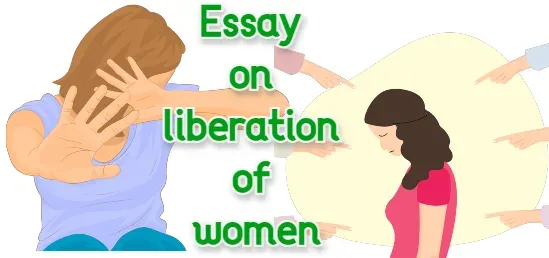Essay on liberation of women
It has often been said that woman constitutes the second line of defence in the battle of life which man wages against circumstances. This is certainly very important. But today we do not differentiate between man and woman so far as the equality of status of the two is concerned.
A woman has the same right to be on the front line as a man, Regarding the capacities of the two, it has been proved that the sum total of capacities of an average woman is not less than that of an average man.
But then, we find the position of women in our society leaves much to be desired. Women are given only a secondary role. Right since birth, the discrimination between a boy and a girl is ordinarily found in most homes.
The boy gets the major part of the nutritive diet available in the family. He gets more attention in matters of education and other avenues of social advancement. The chains of restrictions on the freedom of movement get tightened as a girl grows in years.
In course of time, she develops an inferiority complex that accompanies her to the grave. In the marriage market, she is supposed to be simply a commodity; dowry deals are struck like any business deals; those failing to bring in adequate dowry have to face trials and tribulations galore and sometimes even death.
A woman who is the mother of us all has been relegated to such an inferior position. The birth of a girl child is an occasion of despondency in the family, while that of a boy is one of great joy and merriment.
The chariot of social life cannot run only with a single wheel and yet why is there so little recognition of the importance of the other wheel? In most homes, women live a life not better than that of slaves. They are no better placed than the hewers of wood and drawers of water.
Can a society in which women are treated like this make any progress? Women constitute nearly half part of the population.
If this half part remains undeveloped, stunted in growth, deficient in the enjoyment of opportunities that make life full, it is impractical to expect such a society to develop and grow to its full potential.
Thwarted personalities do not make a great nation. And that is why India has lagged behind in the march of progress.
We certainly know of great women celebrities in different fields of life in India: Gargi, Lopa Mudra, Rajia, Ramabai, the queen of Jhansi, Sarojini Naidu, Vijai Laxmi Pandit, Indira Gandhi, to name only a few women out of an array of illustrious women who have adorned the pages of history at different epochs.
But these were the ones who were greater than the prevailing milieu, those who cleft in twain any adverse circumstance that stood in their way.
If only we had not erected artificial barriers in the development of women, our society would have been much richer, stronger, more vital, and more forward-moving. But we sadly missed the bus. The bad condition of women became a veritable obstructing factor in our march to heights of achievement and growth.

Comments
Post a Comment